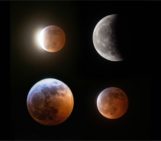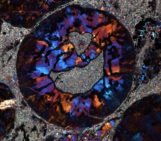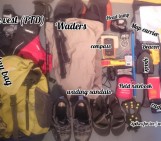
If you are a scientist you probably know the value of a good, well designed image. The right graph or diagram can help the reader to really grasp the meaning of a complicated theory or process, help to illuminate a critical piece of data, or highlight a key finding. But whilst much advice exists about how to create effective, accessible images, what about photographs?
In our early training, geoscientists are often taught not to rely on photographs as it can be difficult to know what detail to focus on, whereas a field sketch helps the reader to narrow in on the specific data that you, the researcher, are trying to draw attention to. In these cases the photograph becomes secondary, often used to provide broader context, but not the primary source of information – unless they are combined with annotation.
However, photographs can be a very valuable resource, not just for communicating your work with a non-scientifically-trained audience, but also to other scientists, in research papers and presentations. For World Photography Day this year we wanted to take another look at scientific photography and give our top 5 tips for getting the perfect science photo to accompany your research.
Top 5 Tips for getting a great science photo:
1. Quality over quantity. Ever more important with photographs than with other images, quality is key. Make sure that any photo you use is high resolution and in focus. If you need to add an item for scale, choose it carefully. If you don’t have access to a ruler or other actual measuring device, avoid objects that are regionally specific, like currency, which doesn’t always translate to people from other countries.
2. A picture is worth a thousand words. Humans interpret layered meaning from photos much more than from text and it’s important to be aware of this. Whether you want to convey a science story or a human story, the way you frame your shot, the angle you use, and the amount of complexity in the photo all influence the way that the viewer interprets the image. Want to communicate the importance of one specific object? Make sure it’s uncluttered in the center of the frame. Want to share a feeling of awe in the research location? Place the camera at a low angle or use a wide lens to give a sense of scale.
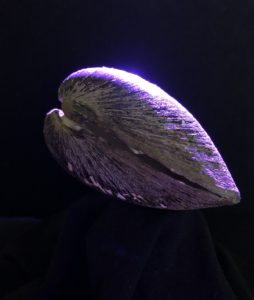
By centering the shell on a flat black background, Jennifer implies the importance of the shape of the shell itself in her research. Studying shell morphodynamics to improve climate models, by Jennifer Guarini.
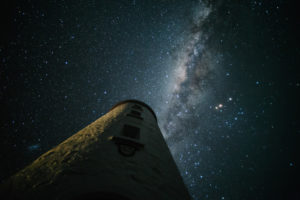
Looking up at your subject helps the viewer feel a similar sense of awe. 43°29’S 147°08’E – Meet me at the lighthouse, by Vytas Huth.
3. That ‘wow’ photograph. It’s rare for a photograph to encapsulate the drama of a research conclusion, but when it happens you will know. Sometimes an image captures the exciting moment when your research comes together, or a metaphor for the purpose behind your research. Sometimes it’s a good colour combination or well-balanced features (the rule of thirds in photography can really help you with this), but remember especially when thinking of your colour choices to consider accessibility and go for high contrast options – keep it striking and accessible! If you really want to get that ‘wow’ photograph, why not consider partnering with a photographer during your research?
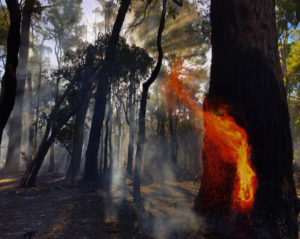
Stefan’s photo demonstrates how using the rule of thirds and creative focus can recreate the drama of your research. Hollow eucalyptus tree burning by Stefan Doerr.

One of our most popular images, used by journalists around the world, Mario’s photo represents a broader impact of a piece of research – in this case climate change. Mirror mirror in the sea… by Mario Hoppmann.
4. Put yourself back in the picture. If you want to photograph a piece of equipment or process, it’s usually much better to take a photograph with a person using the equipment. Not only will this help non-experts to understand how the equipment is meant to be used, it’s more interesting for people who do know how to use it. This is true for field photography too!
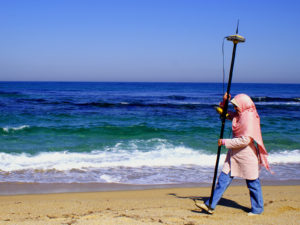
Put the scientist back in the photo, especially when showing how equipment is used. Mapping the Algerian shoreline by Filippo Dallosso.
5. Tell a personal story. Sometimes you had a mishap in the field or a funny moment captured on film whilst you were doing an experiment. Maybe you found something quirky or funny in your drone footage, or through the microscope. Whilst these images are probably not suitable for publishing in a research paper they are excellent for telling the story of your research beyond just the data. Adding light-hearted photos that reflect your personality or the actual realities of your research are important because they help dismantle the myth of science in the ivory tower. These images can be funny, emotional, inspirational, but most importantly they should be real.
- Fieldwork can be difficult and exhausting. After a long day in the field by Michael Lonardi.
- It’s happy to see you! Emoji from meteorites; impact spherule by Seda Özdemir.
- When you FINALLY get that core you need… and are covered in mud as a result! The happiness of taking a muddy core by Loic Piret.
It’s also important to mention editing. If sharing your photo on social media is your aim, to accompany and promote the release of a paper, think about the shape of your photo – do you want to crop it? Be careful with editing though; filters can be fun, but using a filter that changes a scientific image too much can not only be ethically problematic, but it can reduce an audiences trust in your communications. If your research is going to be shared with the media, having a really interesting and publicly accessible image or video to accompany it can dramatically improve the chances of your research being covered by journalists.
Once you have the perfect image to communicate your research – you will undoubtably want to share it! All the images included in this blog are from the EGU’s open access photo repository: imaggeo! It’s free to upload your image and a description to the repository where it will join thousands of other photographs that are all free to be used with attribution. For more information visit the imaggeo website and upload your photos today!




